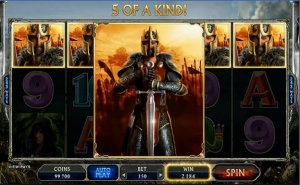Is King Arthur a real character?

For many, the stories of King Arthur of Camelot are nothing strange. It was the legendary king who led the British forces (including the Round Table Knights whom he had great confidence in) in the battles against Saxon invaders in the early 6th century A.D. But is King Arthur a real or just mythical Celtic hero?
Although he has been arguing for hundreds of years, historians still cannot confirm whether King Arthur really exists. He does not appear in the only surviving source of the Saxon invasion, in which the author is Gildas, a Celtic priest, writes about a real battle at Mons Badonicus (Badon hill) around 500 AD Several hundred years later, Arthur first appeared in the writings of a Welsh historian named Nennius, who listed 12 battles that the king was supposed to have fought. All battles originate in Welsh poetry, and they take place in so many different places and times that a human being cannot participate in all the battles.

Other Welsh writers were later inspired by Nennius’ work, and King Arthur’s fame spread outside Wales and the Celt region, especially after the Normandy conquest of 1066. linking England with northern France. In the famous 12th-century book “History of the Kings of Britain”, Geoffrey of Monmouth wrote the first story of King Arthur’s life, describing the bar. His swordsmanship is Caliburn (later known as Excalibur), loyal knight Lancelot, Queen Guinevere, and Merlin. The book is an intriguing combination of myth and reality, and is thought to be based on a lost Celtic manuscript that only Geoffrey can read.
A series of works by the French poet Chrétien de Troyes gave Arthur a sacred mission by giving him the task of finding the mysterious Holy Grail. Although Arthur may not be real, his legendary power is increasingly strong over time. Many British kings from Henry VIII to Queen Victoria took advantage of the legend of King Arthur for political purposes, while countless writers, painters, photographers, filmmakers, and other artists were all created their own versions of Arthur’s stories for posterity.

